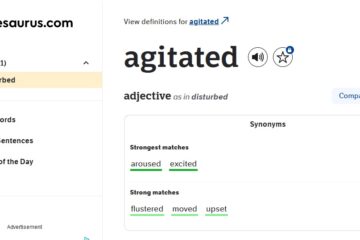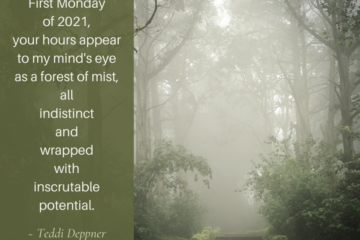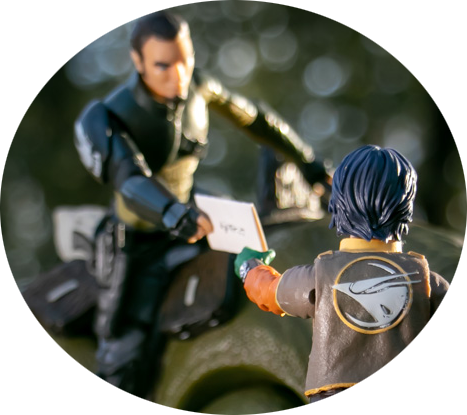
This is the last straw. When it happened the first time, I shrugged and kept my mouth shut. Then it happened again in the same week, and I thought, “Wow, that’s too bad.” But when it happened again, I barely curbed the urge to turn to a close friend and rant about this frustrating trend.
What am I talking about?
I’m talking about wonderful, earnest aspiring authors with really bad book covers, writing samples and abysmal marketing savvy. Actually, that’s not accurate. It’s more like zero marketing savvy at all. Or perhaps negative 20 on the scale of marketing savvy, because they aren’t just ineffective, they are making a bad impression, and that’s worse than making no impression at all.
My Dilemma
Why am I even talking about this? Why not just keep silent, let these folks stumble about in the dark and find their own way? That’s a good question. It boils down to this: I love people. I love writers. I love artists. I want to see creative people succeed.
There is a great community of writers out there. The variety of people is staggering. Some are highly polished, some still have a lot of writing ahead of them before their work is professional grade (even by my relatively relaxed standards). Some have resources for getting book covers done, some are scrambling to create their own with online graphics generators. Some have money to spend, others don’t. Some have great editor friends, some don’t.
In the wild, wild west of the new publishing world, the new way to go is forward. Onward and upward. Write something, publish it, and see what happens. I get that. I’ll be doing that, too. Making my mistakes and putting out imperfect work, improving as I go. And yet, I feel there is a threshold. A minimum level of quality that is necessary for people — other than your family and friends — to make the decision to buy your product.
An Example: Three Strikes and You’re Out
Here’s an example of how to make a bad impression that goes far enough to lose you a potential customer. This actually happened to me, and it lost me as a potential customer. It lost me as a follower on Twitter.
First, I get a tweet out of the blue from someone I don’t know, inviting me to try their book for free and follow them on Twitter. This was okay. They seemed to have done enough homework that at least they had a book in one of the genres that I read. And they were offering it for free, so there was no financial barrier to giving them a try.
So I clicked the link to the free book on Amazon.com.
Bad impression number one: The book cover was illegible.

I’d like to protect the identity of the person I’m talking about here, so I won’t be using any names. Also, this may or may not be the actual book cover of the person I’m talking about, because I’m not trying to single anyone out or hurt anybody’s feelings. But it is representative of the type of issue I’m talking about, because you can’t read the writing on it! At least, not at the size posted on the Amazon book page.
The art was pixelly and amateur, though not as terrible as some. Still, it was obviously not a professional-grade cover.
Strike one.
Bad impression number two: Two punctuation errors in the first sentence of the Kindle sample.
“[Protagonist name] sat in his saddle looking out over the river as his horse quietly drank from the waters edge, it was a serene view.”
Five punctuation mistakes in the first paragraph. It is obvious that if this trend continues I will be cringing and wincing my way through every paragraph of the entire novel. This author does not understand the difference between periods and commas and appears ignorant of the existence of the possessive apostrophe. Ouch.
Strike two.
Bad impression number three: The author’s entire Twitter feed is “Will you try my book?”
The feed of this person, for as far as I was willing to scroll, was entirely full of invitations to others to try the book for free. I went back to check on this, thinking I might have been impatient and given up too early. But no, I rolled my mouse scroll wheel 50 times and did not reach the end of it.
Why would I want to spam my own newsfeed with this? I want to follow people who have feeds full of interesting and entertaining and useful information. Things that inspire me or alert me to new art or stories that I already enjoy. I want to hear funny things that happen to people and see pictures of the places they visit. I want to hear behind-the-scenes info about their stories. If your Twitter feed is all about selling your book, it’s a bad feed.
Strike three.
You’re Out and We Both Lose
When you, as an author, have surrounded yourself with unqualified people who tell you that your work is “good enough” or even “amazing”, you are selling yourself short. Who is unqualified? Anybody who does not know the difference between professional grade work and work that will lose you the very customers you seek. Family members, friends, and fellow aspiring authors are among the worst offenders. Really sweet, gentle professionals who don’t have the heart to tell you that your work needs improvement are a close second.
Again, I’m not saying your stuff needs to look like it was traditionally published. I’m not saying it can’t have a few typos. I’m not saying you have to spend thousands of dollars on editors or book cover designers. There are ways to do this well even while doing it cheap and simple. I’m saying this:
There is a minimum threshold. The competition is fierce. Bad impressions can kill your reputation. [tweetthis url=”http://ctt.ec/h65fy”]
You need to do this right to make headway.
Is That It? Game Over?
No, it’s not all bad news. I have a few tips to keep you out of the woods, if you fear that you might be headed towards making a bad impression.
Find a trustworthy opinion. No, find three. This may not be the easiest thing in the world, but you can do it. Find someone who knows what they’re talking about and get their honest opinion before you publish. If they’re not available to spend tons of time with you, that’s okay. Ask them for a few minutes of their time once or twice a year. Find someone who is willing to look over your first page or first scene — the beginning of your story is vital to hooking a reader. Find someone who can tell you if your book cover is good enough. This doesn’t have to be a famous author, just someone who has an educated, informed opinion.
Do your homework. There are a thousand and one blogs out there giving excellent tips on publishing good quality work. A few that I’ve found useful:
- Nail Your Novel by Roz Morris
- CreativeIndieCovers.com by Derek Murphy
- The Creative Penn by Joanna Penn
- Killing the Sacred Cows of Publishing by Dean Wesley Smith
Never give up. Teach yourself to enjoy the bitter taste of constructive criticism, the sour tang of suggestions for improvement. Even when it comes from people you trust and respect, it may take a while to get past the sting of the improvement process. But this acquired taste is an asset that will serve you well for the rest of your publishing life. Learn to distinguish between the taste of utter garbage (negative opinions that aren’t well-founded and don’t matter) and the taste of qualified and accurate criticism.
Your Turn
Have you ever struggled with what to say when someone asks your opinion of their work?
Have you ever launched something knowing that it was less than perfect, but satisfied that it was “good enough”?
How do you describe the difference between “good enough to publish” and “this might make a bad impression”?
Please post your thoughts in the comments below, or start a discussion on my Facebook page. I’m always looking to refine my thinking about these issues.




4 Comments
Teddi · at
Mike Duran wrote a good article related to this question of quality on his blog a few weeks ago. There didn’t seem a good spot to put it in the body of my post, but I wanted to link to it from here because it was good.
In his post, he uses the example of Disney, and their choice to put out fewer films per year in order to keep the quality higher. He questions the current indie publishing mantra of “Write faster and publish often”.
Link to his post: Indie Publishing and the Meat Grinder
sparksofember · at
I’ve had very similar thoughts at times. What has really astonished me is books from real publishers (though not the big guys) with horrific covers. They should know better!
On a side note, something I noticed recently is authors who get the rights back for their previously published books having to change the covers when they republish it themselves. The covers sometimes take such a step down in quality in makes me sad!
Katie Lynn Daniels · at
The most bad self-published books I see the gladder I become that I didn’t try to publish my epic fantasy novel that I wrote at age 16. Fortunately, even as ignorant as I was then, I recognized that it needed more work and I loved it too much to release it without polishing, even though I had no clue how to go about doing said polishing. I got as far as getting a proof copy but then got depressed at seeing how much work it still needed.
Some people clearly don’t have those kinds of filters. When I did self-publish I had written my requisite million words of discarded novels and short stories. I make no pretenses to “Supervillain of the Day” being the next great American Novel, but I feel that my writing has reached the point where other people can see it now. SotD isn’t perfect–far from it. Eight books into the series, I’m getting reviews that comment on how much my writing has improved over the last two years. Am I exploiting the self-publishing market for my own self-improvement? Sure. But I have reasonably good covers, and as few typos as me and two other proofreaders can provide.
You don’t have to be perfect to publish, but I agree, there should be a threshold. As for the bad marketing…that’s a whole other topic that ventures into the realm of “having good manners.”
Weekly Write-up #3 - Vaguely Circular · at
[…] of some classic how-not-to-behave incidents to laugh over and learn from. From Teddi Deppner comes How to Make a Bad Impression as an Author which includes some more donts that focus on marketing and twitter […]